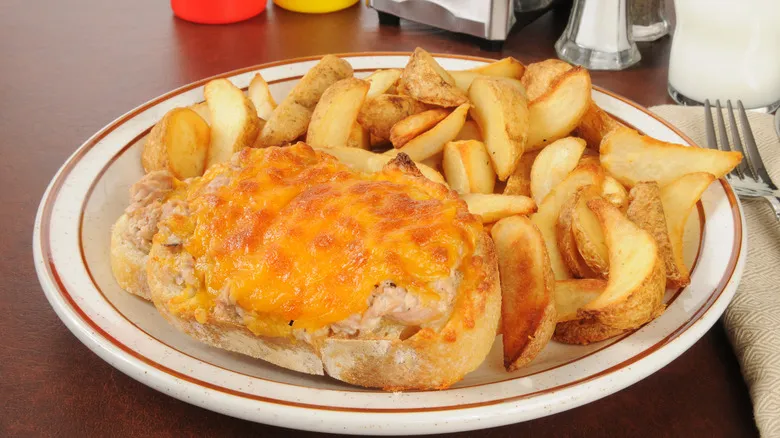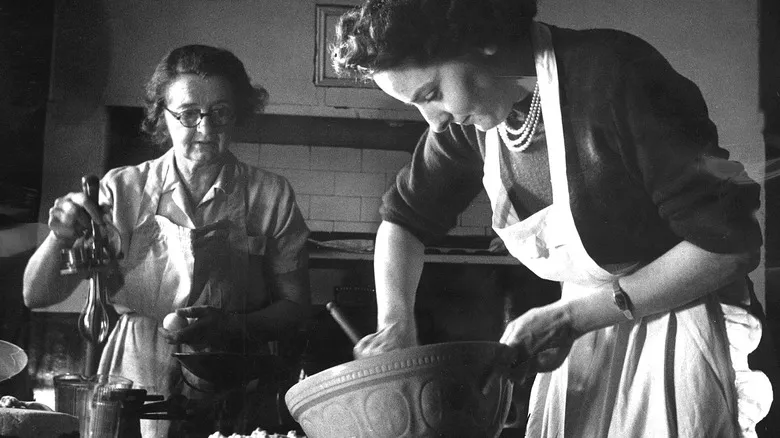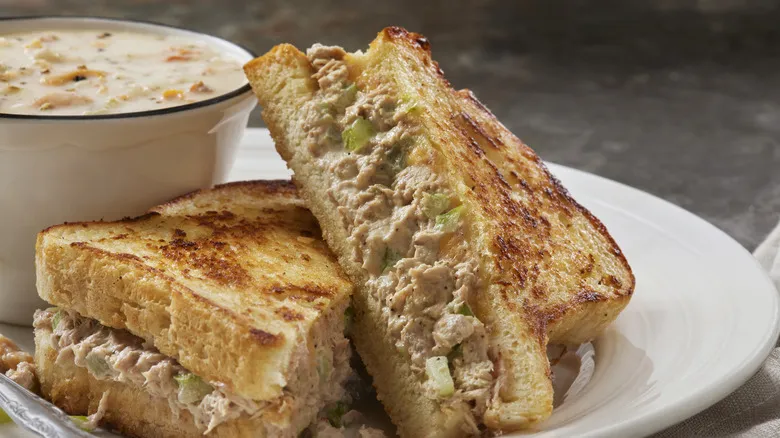Evolution of the earliest tuna melts

The tuna melt likely emerged between 1920 and 1960, but that timeframe is still quite broad. Fortunately, further research sheds light on its history. Lynne Oliver, from the Food Timeline, discovered evidence indicating a surge in the sandwich's popularity after World War II. While cold tuna salad sandwiches, broiled sandwiches featuring cheese and various meats, and hot sardine sandwiches (without cheese) can be found in cookbooks from the 1920s, the first documented recipe for a broiled, open-faced tuna fish sandwich with cheese appears in "The Joy of Cooking" published in 1936, according to Oliver. Although numerous broiled, toasted, and fried variations emerged in the 1940s and '50s, none were referred to as a "melt."
Oliver cites food historian Jean Anderson, who notes that the term "tuna melt" first appeared on family restaurant menus (such as iHOP and Howard Johnson's) in the mid-1970s. However, it’s likely that the idea had already permeated popular culture by then, as chain restaurants typically do not lead in innovation. Notably, the patty melt—a combination of ground beef, onions, and cheese, typically served on toasted rye—made its definitive debut in the 1950s at California drive-ins Biff's and Tiny Naylors. This concept quickly spread across the nation and may have inspired the tuna melt. The fundamental idea of hot fish salad paired with melted cheese was so well-received that by 1964, a cookbook from Ceylon featured a recipe for "American Sardine Toast," which is essentially the same as a tuna melt.
The legend of the Woolworth's origin story

In 2015, Chewing the Fat referenced author Warren Bobrow, who asserted that the tuna melt originated in 1965 at a Woolworth in South Carolina. He recounts how Chef Bo was preparing grilled cheese sandwiches when "...a freshly made tuna salad teetered on the edge [of the griddle]...and, as if by some unseen force, the mixture tipped over, landing on the grilled cheese. Voila!" This unverified tale, which has since been elevated to "legend," citing Bobrow, has been echoed by several websites, including The New York Times.
Bobrow's enthusiasm for the Charleston Woolworth tuna melt is well-known. He was featured in the 2010 edition of Saveur, which showcased 100 favorite recipes from readers. He praises the "freshly made tuna salad sprinkled with diced celery and Georgia sweet onions," along with the white bread "crispy and golden from the flattop grill." When Chowhound reached out, Bobrow confirmed that he lived in Charleston during the 1980s and had a particular fondness for the Woolworth tuna melts, but he is unsure how he came to be associated with the claim that the sandwich was invented there. "That's a good question," he remarked. "But I don't think it was created there, just perfected." It’s likely that whoever first quoted Bobrow may have misinterpreted his words.
Regardless of the origins, tuna melts are undeniably delicious, and it's worth experimenting with your own unforgettable version by changing the type of bread or incorporating anchovy paste into your mayo, as Ina Garten suggests.
Recommended

The History Of Cookbooks In The Fight For Women's Right To Vote

Supermarkets Vs Grocery Stores: Is There A Difference?

Beurre Blanc Is A Traditional French Sauce That's Not As Old As You Might Expect

What Makes Falafel Different From Ta'ameya?
Next up

